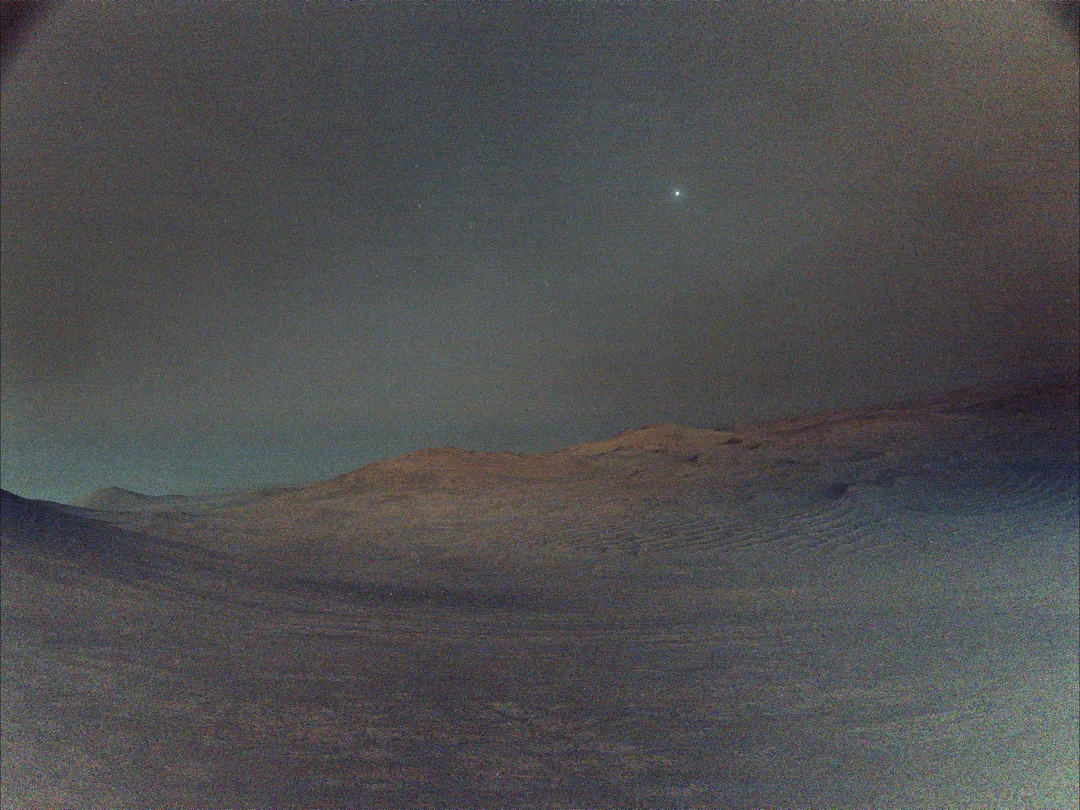
Perseverance Rover Captures Stunning Martian Moonrise, Offering Glimpse of Future on Red Planet
NASA's Perseverance rover has once again delivered a breathtaking image from Mars, this time capturing the faintest of sunrises, with Deimos, one of Mars' two moons, shining brightly in the pre-dawn sky. This stunning photo not only offers a glimpse into the serene beauty of the Martian landscape but also fuels the dream of future mornings spent on the Red Planet.
The image, a composite of 16 individual shots, was taken at 4:27 AM local time on March 1, 2025, the 1,433rd Martian day (sol) of the Perseverance mission. The rover's left navigation camera used its maximum long-exposure time of 3.28 seconds per frame to capture the dim light. The final image represents a total exposure time of just over 52 seconds.

While the low light and long exposures resulted in digital noise, making the image appear hazy, the Perseverance team was able to correct for consistent noise using dark frame subtraction. Two of the brighter white specks in the sky are identified as Regulus and Algieba, stars that are part of the constellation Leo. However, the star of the show is undoubtedly Deimos, appearing as a prominent point in the dark sky.

Nathan Williams, a planetary scientist and Perseverance engineering camera operations team member, described the scene as "peaceful" and reminiscent of early mornings on Earth. He noted, "It's a peaceful scene that feels like many early mornings here on Earth before much of the world awakes and starts its day. It feels almost like home, and perhaps someday we may start our mornings there too."
Deimos, significantly smaller than Earth's moon, measures only 7.8 miles (12.6 kilometers) across and orbits Mars every 30 hours and 17 minutes at an average distance of 14,576 miles (23,458 kilometers) from the Martian surface. For comparison, it's over 500 times smaller than Mars itself, and appears more like a star than a celestial body in the Martian sky.
This image follows Perseverance's previous captures of a Martian eclipse of Phobos, the larger of Mars' moons, crossing in front of the Sun in September, and an incredible glimpse of Deimos against a backdrop of Mars by the European Space Agency (ESA) probe, Hera, in March. These images collectively contribute to our growing understanding of the Martian environment and pave the way for future human exploration.
What does this unique view tell us about the future possibilities of waking up on Mars? What other breathtaking scenes await discovery by the Perseverance rover? Share your thoughts and predictions in the comments below.